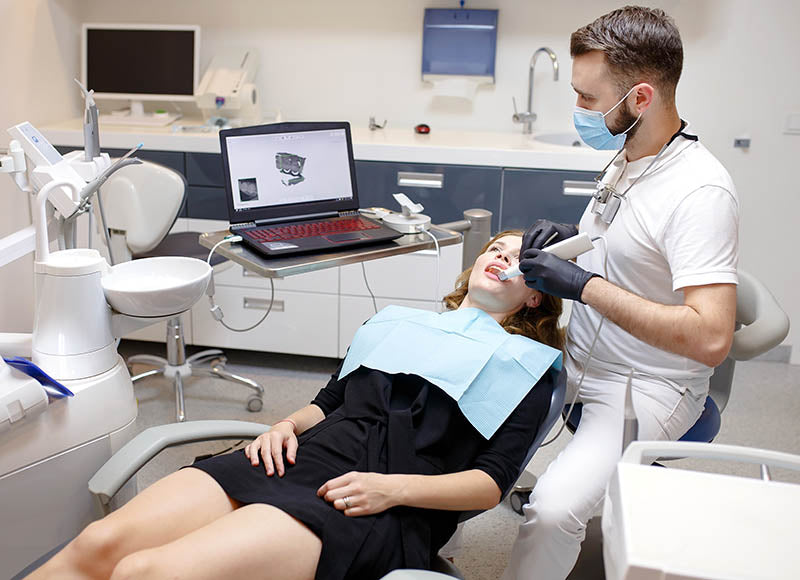
Introduction to intraoral scanners: What are they and how do they work?
Intraoral scanners are a type of dental technology that use advanced imaging technology to create precise, digital 3D models of a patient's teeth and gums. These scanners are often used in place of traditional dental impressions, which can be uncomfortable and time-consuming for patients.
An intraoral scanner typically consists of a handheld wand with a small camera at the tip. The wand is inserted into the patient's mouth and the camera captures multiple images of the teeth and gums. These images are then combined to create a highly detailed 3D model of the patient's mouth.
The 3D model created by an intraoral scanner can be used for a variety of purposes, including:
- Creating dental restorations like crowns, bridges, and veneers
- Planning orthodontic treatment like braces or clear aligners
- Monitoring changes in the patient's teeth and gums over time
Intraoral scanners offer several advantages over traditional dental impressions. First, they are non-invasive and much more comfortable for patients. Additionally, they produce highly accurate and detailed images, which can result in better-fitting restorations and more effective treatment plans. Finally, the digital 3D models created by intraoral scanners can be easily stored and shared, allowing for more efficient collaboration between dental professionals and better communication with patients.
Overall, intraoral scanners are an exciting development in the field of dentistry, and are rapidly becoming a standard tool in many dental practices.





